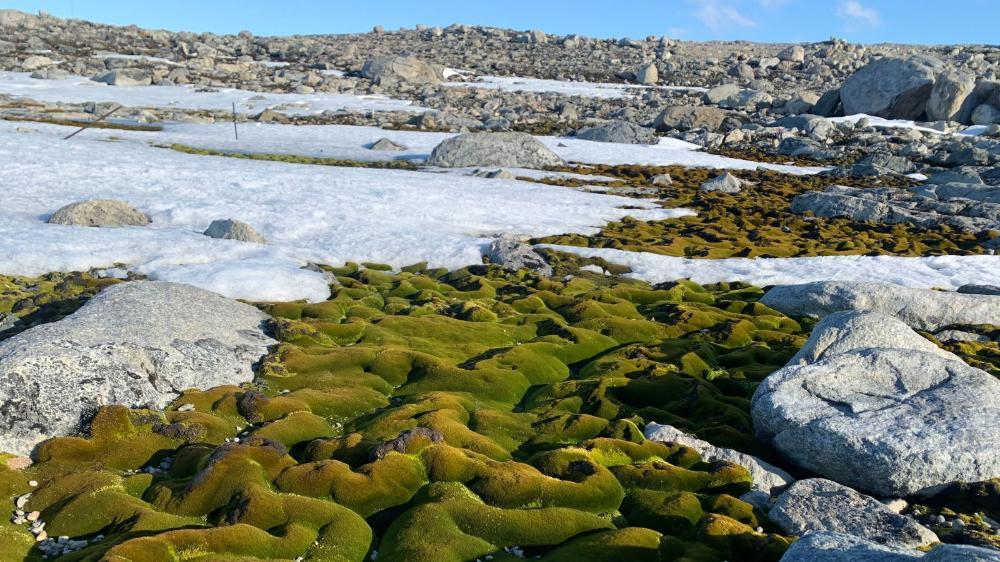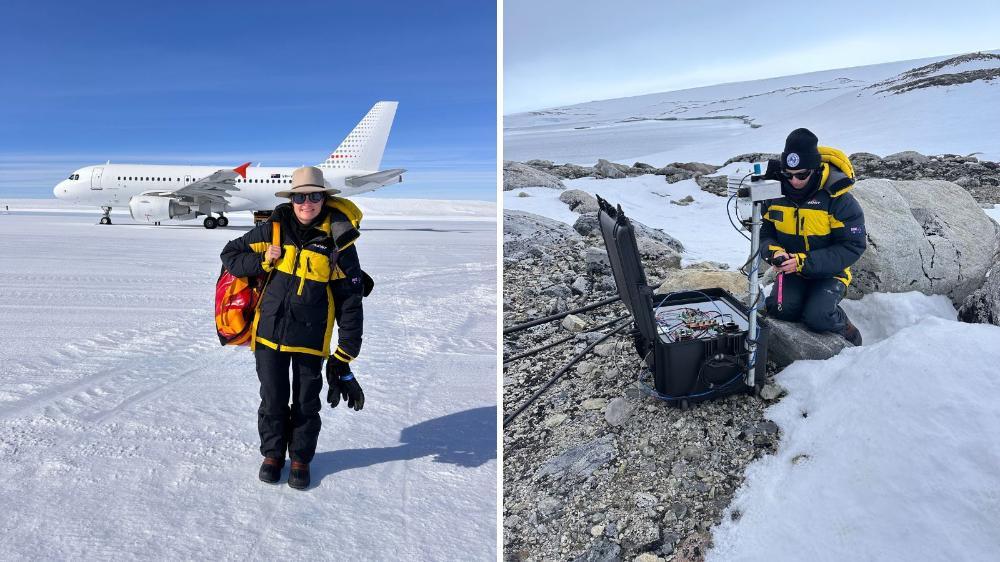Biologist Dr Krystal Randall will survey up to 100 new sites in remote east Antarctica and deploy environmental monitoring systems
With record-breaking monthly temperatures and unparalleled heatwaves recorded last year in Antarctica, all eyes are now on what might happen during the summer of 2024 – 2025.
University of Wollongong (UOW) biologist Dr Krystal Randall has just departed for a three-month expedition to monitor remote field sites in East Antarctica to help identify trends and changes to Antarctic ecosystems impacted by climate changes and extreme weather events.
Dr Randall will join the East Antarctica expedition as a terrestrial biologist on the Biodiversity of East Antarctica, Underwater and Terrestrial (BEAUT) program, led by the Australian Antarctic Division (AAD). Over eight weeks in the remote Bunger Hills camp she will conduct biodiversity surveys, collect moss samples and investigate newly exposed soils along glacial retreat zones across 100 newly identified sites.
Dr Randall is also the UOW collaborator on The Antarctic Near-Shore and Terrestrial Observation System (ANTOS) project where she will deploy new sensing technology developed at UOW to improve understanding and monitoring of Antarctic ecosystems in real time.
Biodiversity of East Antarctica, Underwater and Terrestrial (BEAUT) program
Dr Randall will spend two months camped at Bunger Hills, a remote deep field camp near the Denman Glacier in East Antarctica, 450 kilometres west of Casey research station, as part of the BEAUT program. Surrounded by glaciers, in summer large sections of Bunger Hills are snow and ice-free. The Denman Glacier is one of the largest and fastest-melting glaciers in East Antarctica and alone holds a potential sea level rise of 1.5 metres.
"I'll be conducting biodiversity surveys, collecting moss samples for radiocarbon dating, and investigating the rate of colonisation by vegetation of newly exposed soils along glacial retreat zones," Dr Randall said.
"We have identified up to one hundred sites that we want to go and sample, some are only accessible via helicopter. I'll be doing some radiocarbon dating to look at moss growth rates to see how long they've been growing and whether their growth rates have changed over time.
"Once back at UOW, Dr Melinda Waterman and Distinguished Professor Sharon Robinson will be able to extract a climate record from their cells, by looking down the moss shoots. The shoots grow in annual layers on top of itself, sort of like tree rings. We can date down those layers and get a climate record to see if that area has dried out or warmed up or cooled down over the last however many years the moss has been growing there.
"We can see how areas are drying out because of climate change and ozone depletion. All of that can be reflected within the record that the mosses hold in their cells."

Moss bed in East Antarctica, near Casey Station. Photo: Dr Krystal Randall.
The team of 36 scientists and support personnel heading to Bunger Hills have spent the last six months preparing for the trip, and the last two months training specifically for life at a remote camp.
"It will be my most remote camp in Antarctica to date. We've been trained on camp life, but also on how to coordinate survival rescues, first aid in extreme situations, how to avoid cold injuries like frostbite and hypothermia, how to set up tents and we've also completed quad bike training on how to use quad bikes to get over sea ice."
Dr Jonathan Stark, Australian Antarctic Division Chief, who will oversee BEAUT, said the collaboration with UOW is an important contribution to the project and will provide valuable biodiversity data to better understand this area, and more generally biodiversity in coastal Antarctica. This type of information is also vital to how we manage and protect these areas in the future.
"There really isn't a lot of information about what is actually happening with biodiversity in Antarctica, and we only know a fraction of what's there. By investigating both what lives on the ocean and the land, the marine and the terrestrial, we can begin to see what's living there, what types of spatial or temporal patterns there are," Dr Stark said.
"Things like glacial retreat or different rock outcrops that have different exposures, areas of ocean that used to have sea ice cover, but now they don't, we can see how things have changed over time and how that has changed biodiversity."
The Antarctic Near-Shore and Terrestrial Observation System (ANTOS) project
Dr Randall will also travel to Casey research station, marking her fifth visit to the station, to deploy new sensing technology that she and other researchers from accelerated computing organisation NVIDIA and the Securing Antarctica's Environmental Future (SAEF) team based at UOW have spent the last three years developing and testing.
The technology will allow scientists to better understand the drivers of declines in Antarctic plant life health, including mosses and lichens, and will allow continuous automated monitoring as a pilot study for ANTOS.

Dr Randall arriving at Wilkins Aerodrome on 1 December. Dr Randall deploying an ANTOS sensor system, developed at UOW with Dr Johan Barthelemy and Cameron Angus. Photo: Dr Krystal Randall.
Dr Randall and the SAEF team deployed a webcam (MossCam) and smart sensor system in Antarctica last year to remotely monitor moss beds, providing scientists with invaluable and continuous images and data about the Antarctic environment to help understand what conditions the vegetation and the soil communities are exposed to in Antarctica.
"We will put sensors in some of the heavily vegetated areas in East Antarctica, near Casey Station, that will stay out all of summer. For the first time, one of these systems is going to stay out through winter too, and that is primarily to give us some data on what happens through the transition into winter for the vegetation and the soils," Dr Randall said.
"We hope to gain an understanding of how long, even after they're covered by snow, temperatures are warmer than 0°C. We think that snow could act as an insulator so there might be a period leading into winter, where there is still the opportunity for biological activity. It could have a greenhouse effect from the snow cover, so it could be protected from wind and the cold, and probably a little bit warmer under there, especially the mosses."
The newly deployed technology will allow scientist to be able to monitor changes from remote locations well after the expedition is over, with the UOW team monitoring from Wollongong.
"It's going to really help us understand the impacts of heatwaves in Antarctica, which have been increasing in frequency over the last few years."
ABOUT SAEF AND THE TEAM IN ANTARCTICA
SAEF is an Antarctic research program, funded by the Australian Research Council as a Special Research Initiative. Established in 2021, SAEF's mission is to understand the changes taking place across the Antarctic region – to its climate and its biodiversity – and develop innovative ways to forecast, mitigate and manage these changes.
SAEF's current fieldwork team in Antarctica is made up of scientists from UOW, Queensland University of Technology, University of Sydney and the Australian Antarctic Division. The team is supported by the Australian Antarctic Program.
Main photo: Image taken from one of the ANTOS sensor systems after a successful deployment in the field on 6 December 2024. The snow covered area in the image has extensive moss beds, and for the first time researchers will capture the melt period to observe the mosses emerging at the beginning of their growing season, and be able to monitor visual changes over the entire season remotely.






